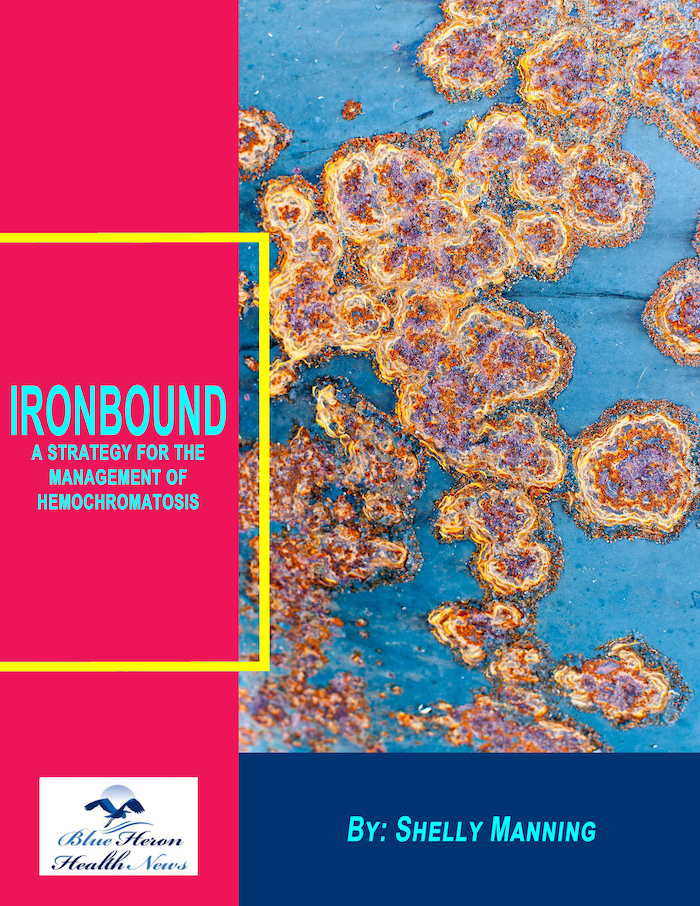
Ironbound™ A Strategy For The Management Of Hemochromatosis by Shelly Manning if you are suffering from the problems caused by the health condition of HCT due to excess amount of iron in your body then instead of using harmful chemical-based drugs and medications you are recommended to follow the program offered in Ironbound Shelly Manning, an eBook. In this eBook, she has discussed 5 superfoods and other methods to help you in reducing the level of iron in your body in a natural manner. Many people are benefited from this program after following it consistently.
How does iron deficiency anemia differ from other types of anemia?
Iron deficiency anemia is one of the most common types of anemia, distinguished by a lack of iron, which is essential for producing hemoglobin in red blood cells. Anemia, in general, refers to a condition characterized by a deficiency in the number or quality of red blood cells, or in the amount of hemoglobin they contain. This deficiency leads to reduced oxygen transport in the body. There are several types of anemia, each with different causes, characteristics, and treatments. Here’s how iron deficiency anemia differs from other types of anemia:
1. Iron Deficiency Anemia
Cause:
- Iron deficiency anemia is caused by inadequate iron levels, which can result from:
- Insufficient dietary intake of iron
- Poor absorption of iron (due to gastrointestinal disorders like celiac disease)
- Increased iron requirements (such as during pregnancy or growth spurts in children)
- Chronic blood loss (from heavy menstrual periods, gastrointestinal bleeding, or surgeries)
Characteristics:
- Red blood cells are typically microcytic (small) and hypochromic (pale).
- Common symptoms include fatigue, weakness, pale skin, shortness of breath, and dizziness.
Diagnosis:
- Low hemoglobin and hematocrit levels, low mean corpuscular volume (MCV), low mean corpuscular hemoglobin (MCH), low serum ferritin, low serum iron, and high total iron-binding capacity (TIBC).
Treatment:
- Increasing dietary iron intake, oral or intravenous iron supplements, and addressing the underlying cause of iron deficiency.
2. Vitamin B12 Deficiency Anemia (Pernicious Anemia)
Cause:
- Caused by a deficiency of vitamin B12, which is crucial for red blood cell formation and neurological function.
- Can result from inadequate dietary intake, poor absorption (as seen in pernicious anemia due to lack of intrinsic factor), or gastrointestinal surgeries that affect B12 absorption.
Characteristics:
- Red blood cells are macrocytic (large) and often oval-shaped. The condition can also cause neurological symptoms like numbness, tingling, balance issues, and cognitive disturbances.
Diagnosis:
- Low hemoglobin and hematocrit, high MCV (macrocytic anemia), low serum vitamin B12 levels, presence of anti-intrinsic factor antibodies in pernicious anemia.
Treatment:
- Vitamin B12 supplementation, either oral or intramuscular, depending on the cause of the deficiency.
3. Folate Deficiency Anemia
Cause:
- Caused by a deficiency of folate (vitamin B9), necessary for DNA synthesis and red blood cell formation.
- Can be due to inadequate dietary intake, increased needs (such as in pregnancy), malabsorption disorders, or certain medications.
Characteristics:
- Similar to vitamin B12 deficiency anemia, with macrocytic red blood cells. Symptoms can include fatigue, weakness, and, unlike B12 deficiency, usually do not involve neurological symptoms.
Diagnosis:
- Low hemoglobin and hematocrit, high MCV, low serum folate levels.
Treatment:
- Folate supplementation and dietary adjustments to increase folate intake.
4. Anemia of Chronic Disease (Anemia of Inflammation)
Cause:
- Associated with chronic infections, inflammatory diseases (such as rheumatoid arthritis or chronic kidney disease), or malignancies.
- The body’s iron utilization is impaired despite adequate or increased iron stores.
Characteristics:
- Red blood cells are usually normocytic (normal size) and normochromic (normal color), but can be microcytic and hypochromic in long-standing cases.
Diagnosis:
- Low hemoglobin, normal or low MCV, low serum iron, low TIBC, normal or high ferritin levels.
Treatment:
- Focuses on managing the underlying chronic disease. Iron supplementation is generally not effective and can be harmful.
5. Hemolytic Anemia
Cause:
- Caused by the premature destruction of red blood cells, which can occur due to autoimmune diseases, infections, inherited conditions (like sickle cell anemia or thalassemia), or reactions to certain medications.
Characteristics:
- Red blood cells are often normal in size and color but are destroyed faster than they can be produced.
Diagnosis:
- Low hemoglobin, elevated reticulocyte count (indicating increased red blood cell production), elevated bilirubin, and sometimes the presence of hemoglobin in the urine (hemoglobinuria).
Treatment:
- Depends on the underlying cause, which may include immunosuppressive drugs, blood transfusions, or treating the infection.
6. Aplastic Anemia
Cause:
- A rare condition caused by the bone marrow’s failure to produce sufficient red blood cells, white blood cells, and platelets. Can result from autoimmune diseases, toxins, radiation, certain medications, or viral infections.
Characteristics:
- Pancytopenia (reduction in all blood cell types), including low red blood cells, white blood cells, and platelets.
Diagnosis:
- Low hemoglobin, low hematocrit, low white blood cell and platelet counts, bone marrow biopsy showing hypocellular bone marrow.
Treatment:
- Immunosuppressive therapy, bone marrow or stem cell transplant, and supportive care including blood transfusions.
Conclusion
Iron deficiency anemia is distinct from other types of anemia primarily in its cause (lack of iron) and the specific characteristics of the red blood cells (microcytic and hypochromic). Each type of anemia has unique causes, characteristics, diagnostic markers, and treatment strategies. Accurate diagnosis and appropriate treatment are essential for managing anemia and addressing any underlying conditions that contribute to its development.
Ironbound™ A Strategy For The Management Of Hemochromatosis by Shelly Manning if you are suffering from the problems caused by the health condition of HCT due to excess amount of iron in your body then instead of using harmful chemical-based drugs and medications you are recommended to follow the program offered in Ironbound Shelly Manning, an eBook. In this eBook, she has discussed 5 superfoods and other methods to help you in reducing the level of iron in your body in a natural manner. Many people are benefited from this program after following it consistently.